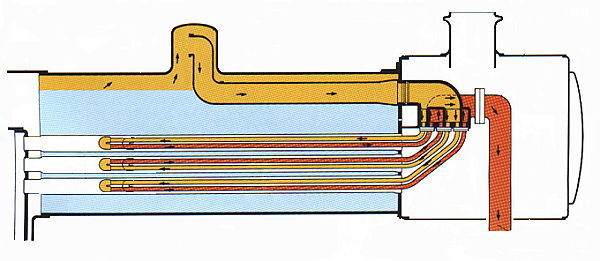
|
|
|
Back to basics
Section 10 - Superheating
Position the mouse cursor over part of the image below to find its name and function
Boiler barrel
Water level inside the boiler
Rear tube plate - rear mounting for the tubes
Steam dome - highest point of the boiler and also usually contains the regulator valve
Main steam pipe - transfers steam from the regulator valve to the superheater header
Large flue tubes - contain the superheater elements
Superheater elements
Chimney
Steam pipe that carry the superheated steam to the cylinders
Superheater header - carries the saturated steam to the superheater elements and also the superheated steam to the steam pipe
Smokebox
Front tube plate - front mounting for the tubes

|
The introduction of superheating was the single most important development for the steam locomotive. Superheating increases the power output of a locomotive by up to 25%, with equivalent savings in coal and water, over non-superheated engines. Its widespread use from 1910 coincided with the needs from the railway operators for heavier trains to be hauled at higher speeds. |
Copyright © by John Daniel 2013.
